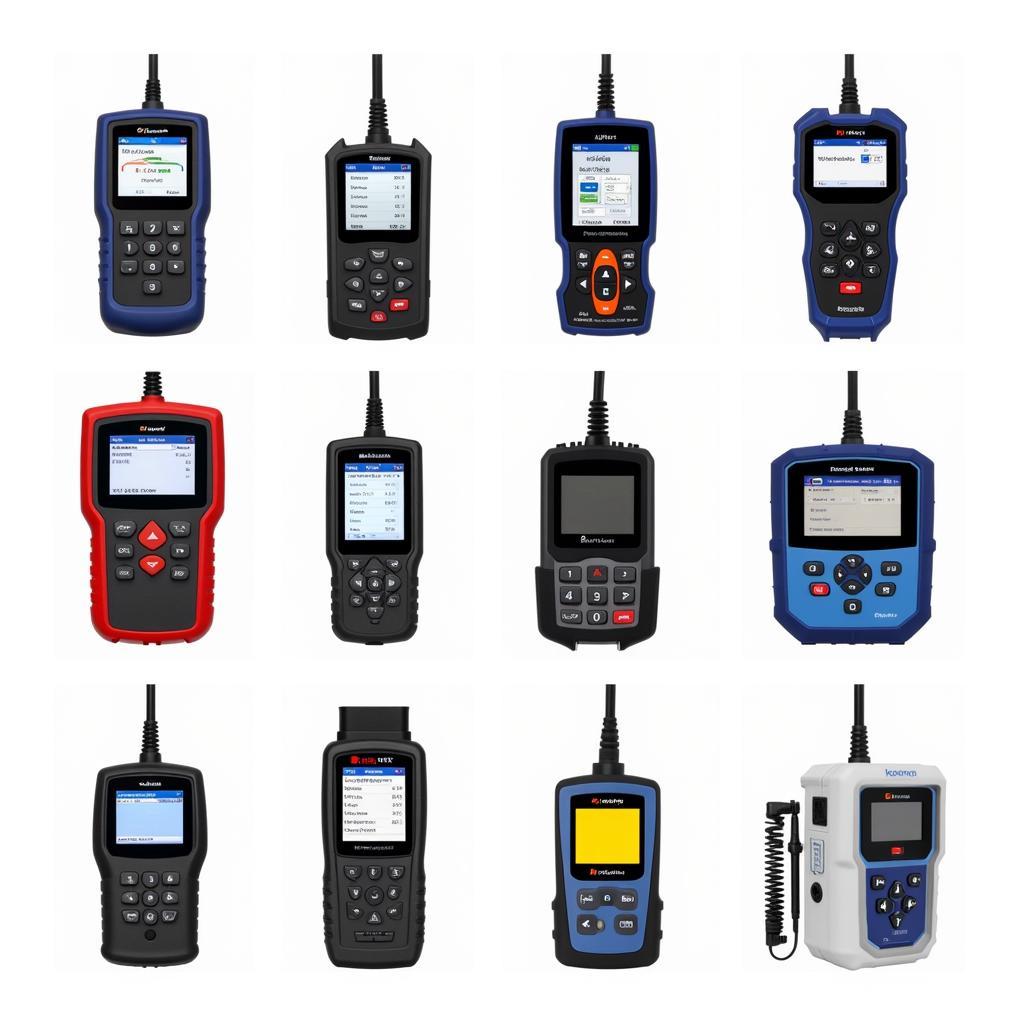A car diagnostic scanner is an essential tool for any mechanic or car enthusiast. Whether you’re a seasoned professional or a DIYer, a high-quality scanner can help you quickly identify and diagnose car problems, saving you time and money. But with so many different scanners on the market, choosing the right one can be overwhelming.
This comprehensive guide will explore the world of car diagnostic scanners, delving into their types, features, and how to choose the perfect one for your needs. We’ll also discuss how to use a scanner effectively and interpret the data it provides.
Understanding Car Diagnostic Scanners
At their core, car diagnostic scanners are electronic devices that communicate with a vehicle’s onboard computer system, often referred to as the Engine Control Unit (ECU). They access and retrieve diagnostic trouble codes (DTCs), which are essentially error codes stored by the ECU when it detects an issue within a vehicle’s systems.
Types of Car Diagnostic Scanners
Car diagnostic scanners come in various types, each with its capabilities and target user:
1. Basic Code Readers: These entry-level scanners are ideal for DIYers who want to read and clear basic DTCs. They are typically budget-friendly but offer limited functionality.
2. OBD-II Scanners: These scanners are more advanced than basic code readers and can access a broader range of data from a vehicle’s OBD-II port. They are suitable for both DIYers and professionals who need more detailed diagnostic information.
3. Professional-Grade Scanners: As the name suggests, these scanners are designed for professional mechanics and workshops. They offer comprehensive diagnostic capabilities, including live data streaming, bi-directional control, and advanced programming functions.
 A variety of car diagnostic scanners for different needs
A variety of car diagnostic scanners for different needs
Key Features to Consider
When choosing a car diagnostic scanner, consider the following features:
- Vehicle Coverage: Ensure the scanner is compatible with the make, model, and year of your vehicle or the vehicles you work on.
- Code Reading and Clearing: All scanners should be able to read and clear DTCs.
- Live Data Streaming: This feature allows you to view real-time sensor data, which is invaluable for diagnosing intermittent problems.
- Bi-Directional Control: This feature enables you to activate specific vehicle components, such as actuators and solenoids, to test their functionality.
- Software Updates: Regular software updates are crucial to ensure the scanner stays compatible with the latest vehicle models and diagnostic protocols.
Using a Car Diagnostic Scanner: A Step-by-Step Guide
Using a car diagnostic scanner is generally straightforward:
- Locate the OBD-II Port: The OBD-II port is typically located under the dashboard on the driver’s side.
- Connect the Scanner: Plug the scanner into the OBD-II port.
- Turn On the Ignition: Turn the ignition key to the “on” position without starting the engine.
- Read the Codes: Follow the scanner’s instructions to read the stored DTCs.
- Interpret the Codes: Use the scanner’s built-in code library or an online resource to understand what each DTC means.
- Clear the Codes: Once you have addressed the underlying problem, use the scanner to clear the DTCs.
The Benefits of Using a Car Diagnostic Scanner
Investing in a car diagnostic scanner offers numerous benefits:
- Accurate Diagnostics: Scanners provide precise DTCs, eliminating guesswork and leading to faster and more accurate repairs.
- Cost Savings: By identifying problems early on, you can avoid costly repairs down the line.
- DIY Empowerment: Scanners give car owners the knowledge and tools to perform basic diagnostics and maintenance themselves.
- Time Efficiency: Scanners significantly reduce diagnostic time, allowing mechanics to service more vehicles efficiently.
Conclusion: Elevate Your Diagnostic Game
A car diagnostic scanner is an invaluable tool for anyone involved in vehicle maintenance and repair. By understanding the different types of scanners, their features, and how to use them effectively, you can unlock a new level of diagnostic precision, saving time, money, and frustration.

Leave a Reply